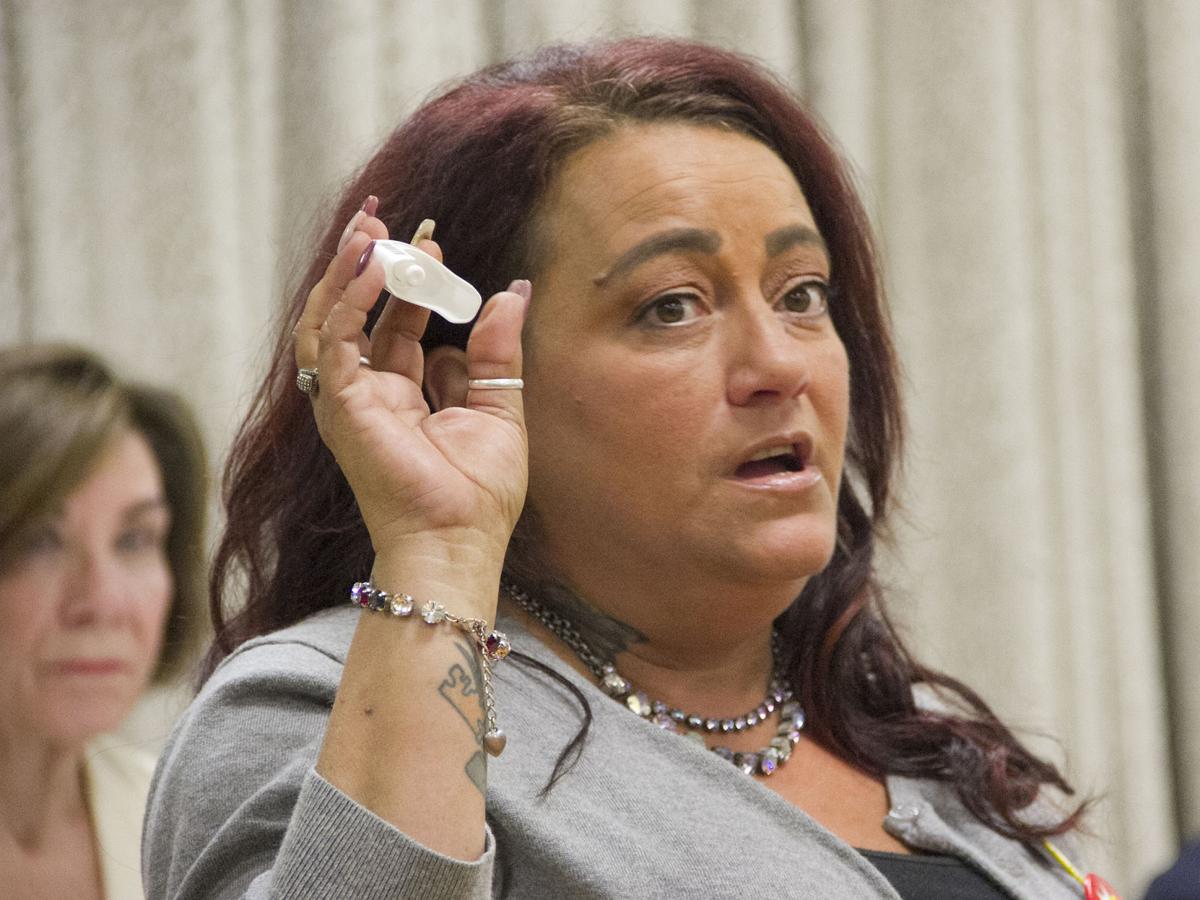Panelists discuss fight against drug overdose epidemic



Some good news came out of the Open House On Addiction hosted recently in Bridgeville.
“In Allegheny County, we’ve had a 40 percent drop in fatal overdoses,” Stacie Brown reported, for 2018 compared with the previous year.
The certified recovery specialist with the county health department was one of five panelists state Sen. Pam Iovino, D-Mt. Lebanon, invited to speak, presenting a variety of perspectives in the fight against addiction, particularly with regard to opioid abuse. Along with the panel discussion, the open house also featured numerous organizations sharing resources to address the issue.
One reason for the decrease in fatalities is a wider availability of naloxone to help treat narcotic overdoses. Brown said the health department has received grant money toward providing the medication for free to first responders, schools, churches and community organizations.

She provided a demonstration of how to use Narcan, the brand name for naloxone, on a person who has stopped breathing after taking opioids.
“This is so simple to use. It’s peel, place, press,” she explained.
Peel the package open. Place the device in either nostril. Press the plunger.
“It takes anywhere between two and three minutes, sometimes instantly, to see a response. You’ll see some color come back,” Brown said about the individual’s skin. “If you administer this on somebody who is not experiencing an opioid overdose, it will do nothing.”
Today, a likely cause for such overdoses is fentanyl, a synthetic opioid that panelist Paul Buchanan of the U.S. Drug Enforcement Agency described as 30 to 50 times more potent than heroin.
He said that the substance primarily comes from China and Mexico, in pill or powder form, and the relative strength of a batch can be anyone’s guess.
“You never know what you’re getting with fentanyl, especially at the street level. You don’t know what they’re adding to it to stretch it out,” Buchanan said. “Generally, the fentanyl is approximately 7 percent pure. Here in our local area, it’s approximately 10 to 12 percent pure.”
The potency sometimes exceeds that amount exponentially. Panelist Rich Levitt told about losing his 22-year-old son, Jonathan, to an overdose in 2017.

“He thought he was taking heroin, but it was fentanyl,” Levitt said, noting its strength as 100 percent.
In September, a Beaver County jury found Robert Goosby Jr. guilty of drug delivery resulting in the deaths of Jonathan Levitt and another man, and Goosby faces a sentence of up to 40 years in prison.
“Every piece of information they collected was critical,” Rich Levitt said about the prosecution. “So if you see something, you must say something.”
He frequently shares Jonathan’s story – “I’ll speak anywhere to anybody” – to help steer people clear of substance abuse, and he has seen a good deal of success.
“I got someone into recovery three weeks ago,” he said, and around the same time, a woman told him about what happened after her daughter heard a guest speaker at her school.
“She came home crying and wanted to talk to her mother more about opioids and drugs because of what happened to this person,” Levitt reported. “That was me she was talking about. I made such an impression.”

Someone made a similarly strong impression on panelist Tess Rem-Canofari, who said she experienced 16 overdoses while she was in the throes of addiction.
“Here’s how my life got saved,” she reported. “The last overdose, this paramedic said to me, ‘You again? You don’t even know how to kill yourself right.’ For whatever reason, that stuck in my head.”
She subsequently broke her addiction and got a job as a certified recovery specialist with Gateway Rehab.
“Here’s a shocker: I’m a councilwoman in Carnegie. Who would have thought? Because I thought you needed a degree. I thought I needed some high-profile education or I needed to know X, Y and Z,” Rem-Canofari said. “Here’s what you need for your community. You need to have passion and the drive to be able to make your community better. And that’s what I strive for.”
The other panelist, Dr. Julia D’Alo, is an emergency room physician at St. Clair Hospital.

“I think one of the greatest challenges of this opioid epidemic is the misunderstanding of what addiction is and the stigma associated with addiction,” she explained. “Addiction is a primary chronic disease of the brain, and until we understand that, we’re going to have a hard time fixing this problem.”
The Mt. Lebanon High School graduate recommends and practices compassion and caring, and she said he has had people in recovery return to the hospital to tell her:
“You told me that I mattered. You told me that you cared about me. You told me that I wasn’t a junkie or I wasn’t worthless. And I heard what you said,” she reported. “So these interactions that we have with people are meaningful.”
With that in mind, D’Alo cited at one positive in connection with opioid abuse.
“As depressing and horrible as this problem is, we also have to focus on the hope of recovery, because it’s happening all around us.”
 Pathways Drug Rehabilitation Luxury Addiction Treatment & Detox Center
Pathways Drug Rehabilitation Luxury Addiction Treatment & Detox Center


